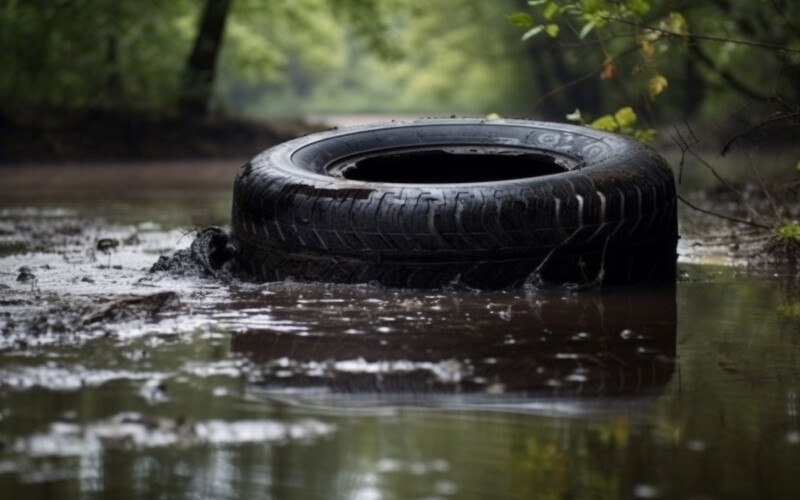A group of West Coast Native American tribes petitioned to have a chemical found in almost all tires banned due to it running into the ocean and killing salmon. U.S. regulators say they will review the use of the rubber preservative 6PPD-quinone. This chemical helps tires last longer, but when 6PPD reacts with the ozone, it turns to dust and can run into nearby waterways.
The Yurok tribe in California and the Port Gamble S’Klallam and Puyallup tribes in Washington state asked the Environmental Protection Agency to prohibit 6PPD earlier this year. They stated that it kills fish, especially coho salmon. They also claimed that when it rains, road chemicals wash into rivers, which are crucial for salmon spawning.
The states of Washington, Oregon, Vermont, Connecticut, and Rhode Island also wrote to the EPA, citing that the chemical poses an unreasonable threat to their waters and fisheries. The agency decided to grant the petition at the end of October, which will begin the lengthy regulatory process that could ban the chemical. According to an AP News piece, tire manufacturers seek an alternative that meets federal safety requirements.
Joseph L. James, chairperson of the Yurok Tribe, told The Associated Press, “We could not sit idle while 6PPD kills the fish that sustain us. This lethal toxin has no business in any salmon-bearing watershed.”
The fate of this single species has detrimental effects on the fishery and endangered Southern Resident orca whales, who rely on salmon as their primary food source. Indigenous communities’ health and culture are at risk if there are no healthy salmon runs. The EPA also noted that the effect this chemical has on human health is also an unknown.
Suanne Brander, an associate professor and ecotoxicologist at Oregon State University, stated that the decision is a good move. However, she cautioned that the lethal impacts on salmon are likely more than just 6PPD. She also echoed a common concern about what chemical would be used by tire manufacturers to replace it.
“There are many different chemicals that fish are being exposed to simultaneously that are concerning. As someone who’s been studying chemicals and microplastics for some time, my concern is the direct focus on one chemical. It’s the mixture.” Brander tells The Associated Press.
The EPA shares that it plans to finalize a rule under Section 8(d) of the Toxic Substances Control Act (TSCA) by the end of 2024, requiring all manufacturers, including importers, of 6PPD to report lists and copies of the unpublished health and safety studies to the EPA.
The Office of Research and Development will continue investigating the chemical, including work on fate and transport, ecotoxicity, and green infrastructure solutions for stormwater contamination. The Office of Water is developing an analytical method for detecting 6PPD-quinone in surface and stormwater, while also developing draft screening values for the chemical to protect salmon and other aquatic life.







